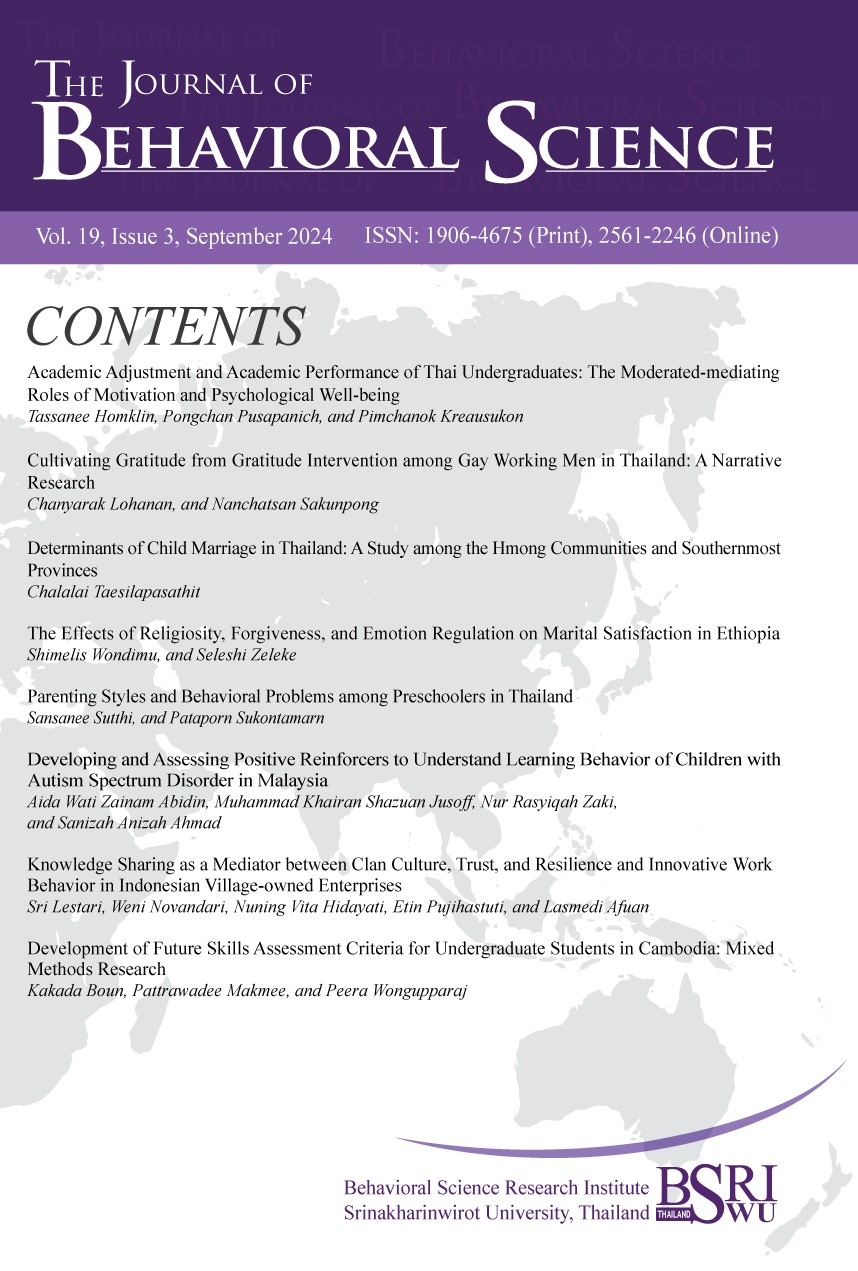Developing and Assessing Positive Reinforcers to Understand Learning Behavior of Children with Autism Spectrum Disorder in Malaysia
Main Article Content
Abstract
Background: This study makes a significant contribution to the field of behavioral science by developing and validating a measurement instrument for assessing the positive reinforcers of autism spectrum disorder (ASD) children. The newly developed instrument is intended for implementation in National Autism Society of Malaysia (NASOM) centers, addressing the crucial need for a validated tool to assist educators in identifying positive reinforcers for children ASD effectively.
Objective: This study aimed to develop and validate the measurement instrument for assessing the positive reinforcers of children with ASD diagnosis.
Design and Methodology: A total of 97 parents of children with ASD diagnosis from four NASOM centers in Selangor participated in the study, using a simple random sampling method. The methodology involved developing, validating, and assessing positive reinforcers for Children with ASD diagnosis. Exploratory factor analysis, reliability analysis, and preference index were employed with the developed questionnaire.
Results: Construct validity demonstrated good instrument validity (KMO = 0.74, p < 0.001), while the instrument’s reliability was also consistent (α = .95). The top preferences are indoor activities specifically on sensory toys, with a preference index of 77.10.
Conclusion and Implications: The preference index reflects the preferences of children with ASD diagnosis involved in this study. This research offers a valuable tool for teachers and caretakers of children with ASD diagnosis, enabling a better understanding of their preferences and behavior to improve management and educational processes.
Originality/Value for the Sustainable Development Goals (SDGs): This study advances behavioral science knowledge and supports the SDGs by enhancing understanding of children with ASD diagnosis’s behaviors, addressing SDG-4 (quality education) by tailoring educational strategies to individual needs, and supporting SDG-10 (reduced inequalities) by promoting inclusive settings.
Downloads
Article Details

This work is licensed under a Creative Commons Attribution-NonCommercial-NoDerivatives 4.0 International License.


